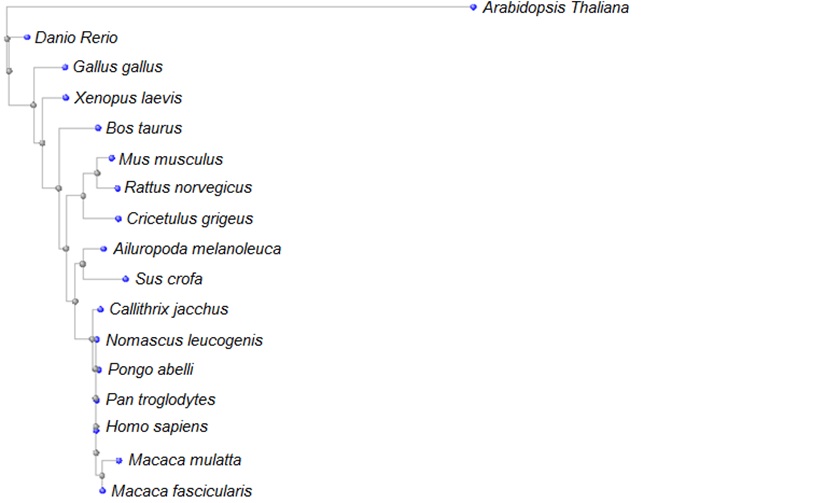This tree was obtained using the COBALT multiple alignment tool and used sequences from the NCBI and KEGG databases (the FASTA sequences are shown in the FASTA section of the website). The purpose of this tree is to clarify the results seen in the smaller phylogenetic tree shown in the multiple sequence alignment section. That is in fact a “slanted” tree, which makes it easier to visualise the phylogenetic relationship between the species, but does not show the distance between the species as clearly. This last point is however, very important because it can lead to suggestions regarding the evolution of the protein and its conservation in different species. The easiest feature to spot in this tree is the very large distance between Arabidopsis Thaliana (a flowering plant) and all the other species. This result confirms the fact that this sequence is much longer than all the other (look at Multiple Sequence Alignment or FASTA section) and might have acquired other domains and functions. Unfortunately no assumption can be made due to the fact that no reference can be found regarding the study of CaMKIV in Arabidopsis. Another result, perhaps more surprising, is the position of Xenopus laevis, the African clawed frog, in the tree. It seems to have a common ancestor with all the mammals later in evolution than the chicken. This is clearly misleading as amphibians are known to be the ancestors of all vertebrate land organisms. This may be due to several reasons which will not be discussed here, but generally a whole genome comparison is the most effective way of looking at the phylogenetic relationship of different species. |
Weiyi Yao, Havva Yalinca, Jonathan Swain, Josep Monserrat Sanchez, Ann-Marie Tong, Ji Lee, Michele Frison, Sebstian Boissier
The Phylogenetic Tree of CaMKIV |
Below shows the phylogenetic tree derived from the alignment of the protein sequence of these species. |

